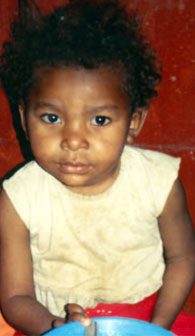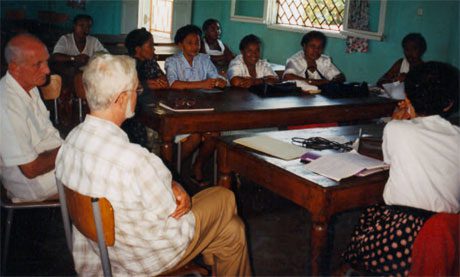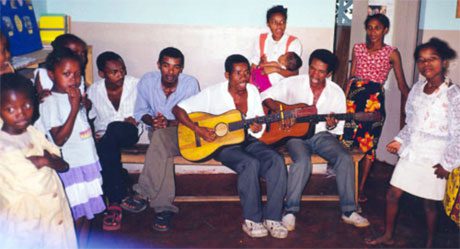 (This marks the eighth in a series of ten Vincentian family projects that will be described by Fr. Robert Maloney, Chair of the Systemic Change initiative in the Vincentian Family.)
(This marks the eighth in a series of ten Vincentian family projects that will be described by Fr. Robert Maloney, Chair of the Systemic Change initiative in the Vincentian Family.)
The transformation that has taken place in AIC (Association of International Charities) Madagascar over the last fifteen years is significant. Although much remains to be done, the systemic change process has enabled the local groups to serve the poor in an increasingly well-organized, collaborative, self-sustaining way.
 The first AIC groups in Madagascar began in 1988. Initially, four women, moved with compassion at the plight of street children, began to care for 15 of them. After a time, however, the number of children grew while the resources to care for them remained slight. The women became aware that, if they were to care for these children properly, they would need to find a new and more effective methodology.
The first AIC groups in Madagascar began in 1988. Initially, four women, moved with compassion at the plight of street children, began to care for 15 of them. After a time, however, the number of children grew while the resources to care for them remained slight. The women became aware that, if they were to care for these children properly, they would need to find a new and more effective methodology.
Overwhelmed, the volunteers of Manakara contacted the International AIC Executive Board and asked them to visit their country. They wanted to become members of the international association. The Board formed a team to visit and to ascertain firsthand the difficulties involved. Upon arrival, the team was struck by the widespread poverty of the area. It seemed to them that it would benefit the AIC groups to band together, creating a network of mutual support and aid.
AIC International knew that, if the local AIC groups were to survive, they needed, in the end, to be self-sufficient. They met with them, underlined their strengths, pointed out areas for improvement, and helped design a formation process for the local groups. Together, the members of the Board and the Manacara’s volunteers started a training process to empower the local volunteers and the poor themselves to resolve problems related with malnutrition, lack of formal education for children and adults, violence against women, and numerous other forms poverty. These volunteers became active subjects of social change and multiplying agents, forming other volunteers.

The newly formed AIC network in Madagascar was soon able to connect with other associations that had their own networks, such as the Congregation of the Mission and the Daughters of Charity. The volunteers, organized as a network at the national level, began to collaborate with and receive support from international organizations like UNICEF, which helped by providing food and didactic materials. Armed with new resources and strategies through networking, AIC Madagascar started to identify further specific goals and address them.

Through joint action with the government and with NGOs, the networked AIC groups were able to offer two years of free primary education to children, reintegrating them into school and providing the students with a regular meal, thus preventing them from adopting begging as their style of life. In an effort to reduce infant mortality, AIC volunteers focused on healthcare, especially for infants, offering check-ups for babies, promoting vaccination against infectious diseases, and distributing vitamins.
In addition, volunteers began to assist in campaigns against AIDS, malaria and cholera. A special program – Mutuelle Santé – was created to foster good health for mothers, so that they could continue to care for their families. Their efforts to prevent violence against women through political action, publications, and other activities have been very successful and have had considerable influence on local governments.The transformation that has taken place in AIC Madagascar over the last fifteen years is significant. Although much remains to be done, the systemic change process has enabled the local groups to serve the poor, their “lords and masters,†in a well-organized, collaborative, self-sustaining way.
Tags: Featured

Please don’t tell me the volunteers still associate themselves with UNICEF. The U.N. is into eugenics up to its eyeballs with sterilizations, abortions, contraception, etc.. There must be Catholic medical associations that can donate equipment to them.
Still, I hope God keeps your work successful!